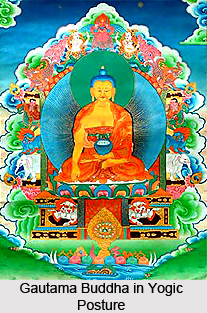 The avidya asmita raga dvesa abhinivesah klesah sutra states about the five fundamental sufferings that agitate the balance of equilibrium. Sufferings come in three levels of mental structure. The more one gets attached to these senses of pleasure and pain, the more one is hindered to achieving samadhi. Behavioural functions of the brain control these statuses through its significant divides.
The avidya asmita raga dvesa abhinivesah klesah sutra states about the five fundamental sufferings that agitate the balance of equilibrium. Sufferings come in three levels of mental structure. The more one gets attached to these senses of pleasure and pain, the more one is hindered to achieving samadhi. Behavioural functions of the brain control these statuses through its significant divides.
avidya lack of spiritual knowledge, spiritual ignorance
asmita ego, pride, `I` or `me`
raga desire, attachment, love, passion, affection, joy, pleasure,
musical mode, order of sound
dvesa hate, dislike, abhorrence, enmity
abhinivesah love of life, fear of death, clinging to life, application, leaning towards attachment, intent, affection, devotion,
determination, adherence, tenacity
klesah affliction, pain, distress, sorrow, trouble
The five afflictions which disturb the equilibrium of consciousness are - ignorance or lack of wisdom, ego, pride of the ego or the sense of `I`, attach ment to pleasure, aversion to pain, fear of death and clinging to life.
Afflictions are of three levels - intellectual, emotional and intuitive. Avidya and asmita belong to the arena of intelligence; here lack of spiritual knowledge combined with pride or arrogance billows the ego, inducing arrogance and the loss of one`s sense of balance. Raga and dvesa belong to emotions and feelings. Raga is desire and attachment, dvesa is hatred and aversion. Succumbing to exuberant desires and attachments or allowing oneself to be carried away by expressions of hatred, creates dissonance between body and mind, which may lead to psychosomatic disorders. Abhinivesa is intuitive - the desire to prolong one`s life, and concern for one`s own survival. Cohering to life makes one apprehensive in dealings with others, and causes one to become selfish and self-centred.
The root causes of these five afflictions are the behavioural functions and thoughts of the various spheres of brain. Avidya and asmita are connected with the conscious frontal brain, and the top brain is considered the seat of the `T` consciousness. Raga and dvesa are connected with the base of the brain, the hypothalamus. Abhinivesa is connected with the `old` brain or back brain which is also known as the unconscious brain, because it retains past subliminal impressions, samskaras.
The sadhaka must learn to locate the sources of afflictions, in order to be able to clip them in the bud through his yogic principles and disciplines.



